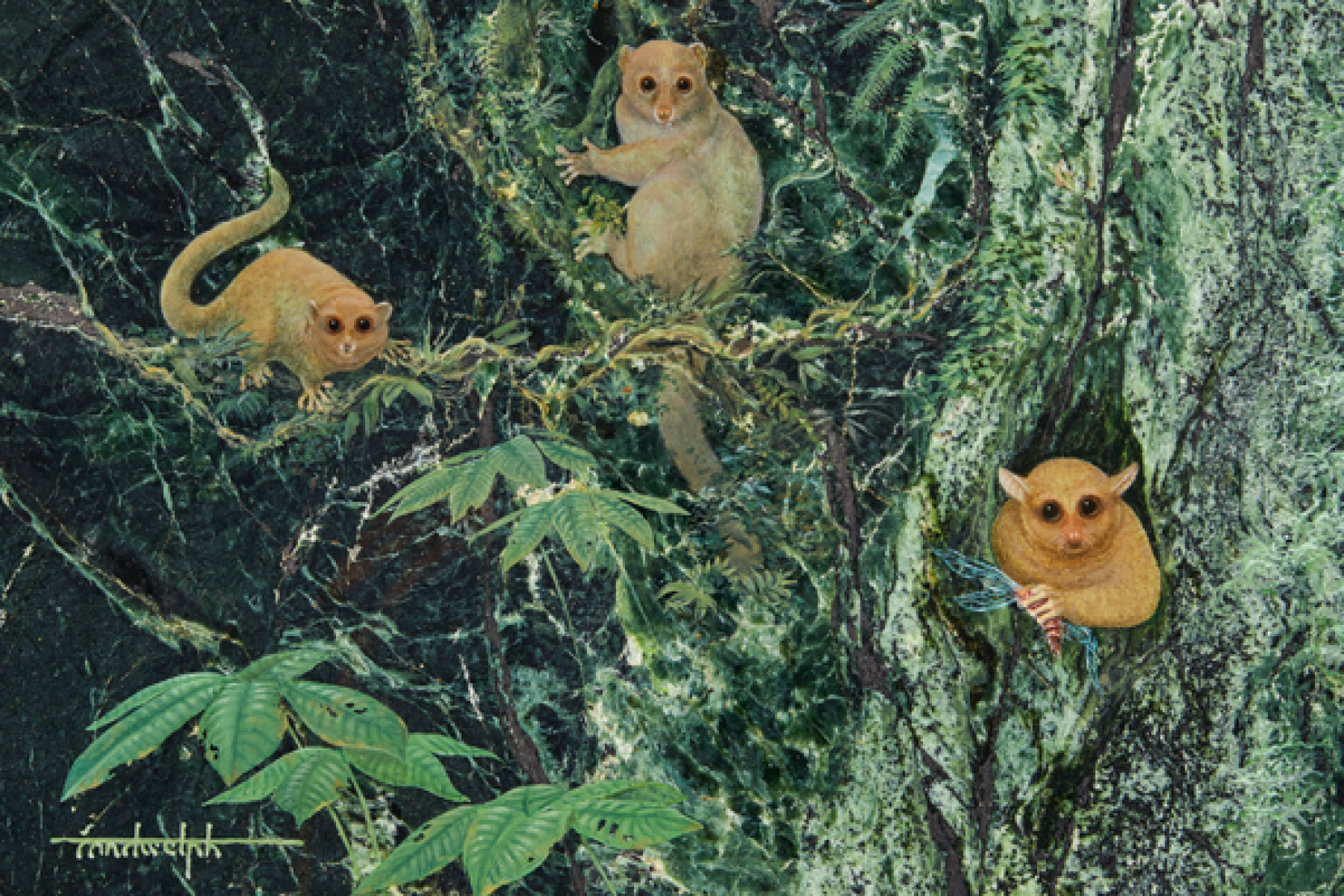Three New Ancient Primates Identified From 46 Million Years Ago - In San Diego
By News Staff | August 28th 2018 11:03 AM
Three new species of fossil primates have been named, residents of
San Diego County from a time when southern California was filled with
lush tropical forests.
The three previously unknown omomyoid primates lived 42 million to 46 million years ago. The researchers named these new species Ekwiiyemakius walshi, Gunnelltarsius randalli and Brontomomys cerutti.
Enamel is the hardest tissue in the body. And as a result, teeth are more likely to be preserved in the fossil record. Studying the teeth, researchers concluded the three new genera, which represent the bulk of the undescribed Friars Formation omomyoid sample at SDNHM, range in size from 113 to 796 grams and are most likely related to a group of extinct species comprising the primate subfamily Omomyinae.

Anthropology professor Chris Kirk's father and Austin-based artist Randy Kirk produced his own rendering of what the species might have looked like. Painting on marble by Randwulph.
Ekwiiyemakius walshi, the smallest of the three new species, was estimated to weigh between 113 and 125 grams — comparable in size to some modern bushbabies. It was named for Walsh, who collected and prepared many of the specimens, and also derives from the Native American Kumeyaay tribe’s place name, Ekwiiyemak — meaning “behind the clouds” — for the location of the headwaters of the San Diego and Sweetwater Rivers.
Gunnelltarsius randalli was named for Gregg Gunnell, the researchers’ late colleague and expert on Eocene mammals, and for SDNHM fossil collections manager Kesler Randall. It was estimated to weigh between 275 and 303 grams, about the size of today’s fat-tailed dwarf lemur.
Brontomomys cerutti was large compared with most other omomyoids and was estimated to weigh between 719 and 796 grams — about the size of a living sportive lemur. Due to its large size, its name derives from the Greek word brontē, or “thunder,” as well as for Richard Cerutti, the retired SDNHM paleontologist responsible for collecting many of the Brontomomys specimens.
The three previously unknown omomyoid primates lived 42 million to 46 million years ago. The researchers named these new species Ekwiiyemakius walshi, Gunnelltarsius randalli and Brontomomys cerutti.
Enamel is the hardest tissue in the body. And as a result, teeth are more likely to be preserved in the fossil record. Studying the teeth, researchers concluded the three new genera, which represent the bulk of the undescribed Friars Formation omomyoid sample at SDNHM, range in size from 113 to 796 grams and are most likely related to a group of extinct species comprising the primate subfamily Omomyinae.

Anthropology professor Chris Kirk's father and Austin-based artist Randy Kirk produced his own rendering of what the species might have looked like. Painting on marble by Randwulph.
Ekwiiyemakius walshi, the smallest of the three new species, was estimated to weigh between 113 and 125 grams — comparable in size to some modern bushbabies. It was named for Walsh, who collected and prepared many of the specimens, and also derives from the Native American Kumeyaay tribe’s place name, Ekwiiyemak — meaning “behind the clouds” — for the location of the headwaters of the San Diego and Sweetwater Rivers.
Gunnelltarsius randalli was named for Gregg Gunnell, the researchers’ late colleague and expert on Eocene mammals, and for SDNHM fossil collections manager Kesler Randall. It was estimated to weigh between 275 and 303 grams, about the size of today’s fat-tailed dwarf lemur.
Brontomomys cerutti was large compared with most other omomyoids and was estimated to weigh between 719 and 796 grams — about the size of a living sportive lemur. Due to its large size, its name derives from the Greek word brontē, or “thunder,” as well as for Richard Cerutti, the retired SDNHM paleontologist responsible for collecting many of the Brontomomys specimens.
Nenhum comentário:
Postar um comentário
Observação: somente um membro deste blog pode postar um comentário.